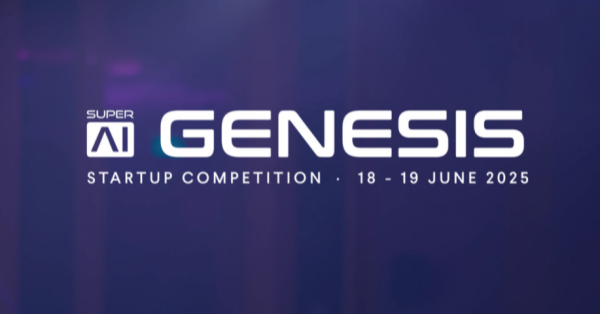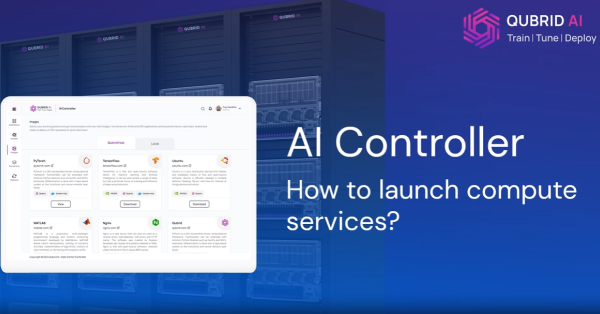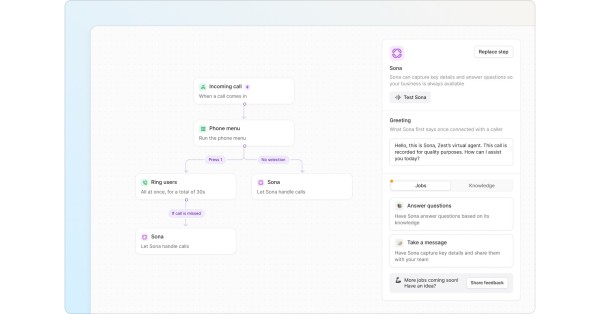DeepSeek AI: The Rising Chatbot Challenging OpenAI and Redefining AI Efficiency
DeepSeek has rapidly emerged as a formidable player in the AI landscape. The Chinese AI startup’s chatbot app recently soared to the top of the Apple App Store charts, challenging industry leaders like OpenAI’s ChatGPT. With its compute-efficient AI models and aggressive pricing strategy, DeepSeek has ignited discussions about China’s role in the global AI race and the sustainability of U.S. tech companies’ dominance.
DeepSeek AI: The Chinese Startup Challenging AI Giants
DeepSeek was founded in May 2023 as an AI research lab under High-Flyer Capital Management, a Chinese quantitative hedge fund that leverages AI for trading. Liang Wenfeng, an AI enthusiast and hedge fund expert, co-founded High-Flyer in 2015 and launched the fund’s AI-focused research arm in 2019.
By 2023, DeepSeek became an independent entity, investing in its own data center clusters for training AI models. However, due to U.S. export restrictions on high-performance AI chips, DeepSeek had to rely on Nvidia H800 GPUs—a less powerful version of the H100 chips available to U.S. firms. Despite these limitations, the company’s breakthroughs in AI efficiency allowed it to compete with industry giants at a fraction of the cost.
Inside DeepSeek’s AI Models: From DeepSeek-R1 to Janus Pro
DeepSeek has iterated quickly on its AI models, improving efficiency and performance with each version. Here’s a breakdown of its key AI models:
1. DeepSeek Coder (November 2023)
- The company’s first AI model, focused on coding assistance.
- Released as a free, open-source tool to attract developers.
2. DeepSeek-V2 (May 2024)
- A general-purpose AI model for text and image processing.
- Introduced a low-cost pricing model, forcing competitors like ByteDance and Alibaba to lower their AI service prices.
3. DeepSeek-V3 (December 2024)
- Uses a Mixture-of-Experts (MoE) architecture, activating only a portion of the model’s parameters at a time to improve efficiency.
- Features 671 billion parameters and a 128,000-token context window, allowing for more complex and coherent responses.
- Benchmarked as cheaper and more efficient than OpenAI’s GPT-4o.
4. DeepSeek-R1 (January 2025)
- A reasoning-focused model designed to compete with OpenAI’s o1 model.
- Uses reinforcement learning and an emergent behavior network, enabling it to fact-check its own responses and improve reliability in scientific and mathematical queries.
- Despite taking longer to generate responses, its accuracy in logic-based tasks has made it a strong alternative to OpenAI’s solutions.
5. Janus-Pro-7B (January 2025)
- A vision model capable of understanding and generating images, positioning DeepSeek as a competitor in the AI-powered multimedia space.
Janus Pro vs. DALL-E 3: How DeepSeek Competes in AI Image Generation
Beyond its chatbot and text-based AI models, DeepSeek has ventured into AI-powered image generation with its Janus Pro model. Released in January 2025, Janus Pro is DeepSeek’s most advanced image generator, designed to compete with OpenAI’s DALL-E 3 and Stability AI’s Stable Diffusion.
Key Features of Janus Pro:
- Outperformed competitors in text-to-image generation benchmarks.
- Uses 72 million high-quality synthetic images and real-world data to improve image realism.
- 7 billion parameters, enhancing both training speed and accuracy.
- Available on Hugging Face and GitHub, fostering open-source collaboration.
With its scalability and cost efficiency, Janus Pro represents a major advancement in multimodal AI, positioning DeepSeek as a strong competitor in AI-driven creative tools.
DeepSeek vs. OpenAI: How This AI Startup is Shaking Up the Industry
DeepSeek’s rise has shaken up the AI industry, particularly in three key areas:
1. Cost Disruption
DeepSeek’s R1 model reportedly cost less than $6 million to develop, compared to the hundreds of millions spent on OpenAI’s o1 model. Its API pricing is also dramatically lower:
- OpenAI’s o1 model charges $15 per million input tokens and $60 per million output tokens.
- DeepSeek-R1, by contrast, charges $0.55 per million input tokens and $2.19 per million output tokens—over 90% cheaper than OpenAI.
This aggressive pricing is undercutting competitors and shifting the market dynamics in AI.
2. Efficiency and Training Innovations
DeepSeek’s models use a reinforcement learning approach, training through trial and error rather than costly supervised learning. The Mixture-of-Experts architecture further optimizes resource usage, enabling performance comparable to ChatGPT at significantly lower computational costs.
Additionally, DeepSeek employs reward engineering, refining how AI models prioritize responses to improve accuracy in complex reasoning tasks.
3. Open Source vs. Proprietary AI
Unlike OpenAI, which operates with limited transparency, DeepSeek offers its models under permissive licenses, allowing developers to build on them. More than 500 derivative models based on DeepSeek’s R1 model have already been created on Hugging Face, accumulating over 2.5 million downloads.
This approach is fueling innovation and making AI tools more accessible worldwide, further intensifying competition.
Can AI Be Sustainable? DeepSeek’s Energy-Efficient Training Model
One of DeepSeek’s biggest advantages is its energy-efficient AI model, which challenges the assumption that cutting-edge AI must come with massive energy costs. Traditional AI models like ChatGPT, Gemini, Claude, and Perplexity consume vast amounts of power. For example, training GPT-3 generated around 552 metric tons of CO₂.
In contrast, DeepSeek has managed to achieve similar performance while using significantly less computing power and energy. Its Mixture-of-Experts (MoE) architecture activates only a subset of its parameters at a time, reducing overall power consumption. Additionally, DeepSeek’s training approach optimizes efficiency by relying on older, less power-hungry GPUs rather than the latest high-performance AI chips restricted by U.S. export bans.
This efficiency has far-reaching implications:
- Lower environmental impact with reduced carbon emissions.
- Less reliance on energy-intensive cooling systems in data centers.
- A more sustainable AI future, as the industry looks for ways to scale AI development without exacerbating climate change.
While some experts warn that any efficiency gains could be reinvested into training larger models, DeepSeek’s approach proves that high-performance AI can be achieved without excessive energy consumption.
DeepSeek and AI Security: U.S. National Security Risks Explained
DeepSeek’s rise has not gone unnoticed by governments and security experts.
1. U.S. National Security Concerns
The Biden administration has closely monitored DeepSeek’s growth, viewing it as a challenge to U.S. AI leadership. Tech investor Marc Andreessen likened DeepSeek’s rise to a “Sputnik moment” for AI—comparing it to the Soviet Union’s unexpected lead in the space race.
Additionally, concerns persist over China’s regulatory oversight of DeepSeek’s models. The company must comply with Beijing’s internet regulations, meaning its chatbot won’t answer politically sensitive questions about Tiananmen Square or Taiwan’s autonomy.
2. Cybersecurity Risks and Data Privacy
Security analysts have raised privacy concerns about whether user data from DeepSeek’s chatbot could be accessed by the Chinese government. This echoes the controversy surrounding TikTok, which faced scrutiny over potential data sharing with Chinese authorities.
Furthermore, DeepSeek suffered a large-scale cyberattack on January 27, 2025, temporarily restricting new user registrations. Speculation suggests it was a DDoS attack, but DeepSeek has not disclosed specific details.
The Hidden Risks of DeepSeek’s AI: Security, Privacy & Governance
Despite its impressive advancements, DeepSeek has raised concerns regarding AI safety and security risks.
1. Lack of Transparency in AI Safety Measures
Unlike OpenAI, DeepSeek has not publicly outlined AI safety protocols or research initiatives focused on responsible AI development. Industry leaders worry that its open-source approach, while fostering innovation, could also lead to unregulated AI applications.
2. National Security Implications
The U.S. government and military organizations are closely monitoring DeepSeek’s rise, fearing potential security threats. The U.S. Navy reportedly banned DeepSeek due to concerns about data access and cybersecurity vulnerabilities.
3. AI Proliferation Risks
Anthropic co-founder Jack Clark warned that DeepSeek’s rapid AI proliferation could remove barriers to developing powerful AI worldwide, increasing the risk of misuse. With fewer restrictions on AI deployment, some worry that DeepSeek’s models could be used in disinformation campaigns, deepfake generation, and cyberattacks.
4. Cybersecurity Challenges
DeepSeek’s January 27 cyberattack highlights potential vulnerabilities. While the nature of the attack remains unclear, DDoS attacks and API abuse could be ongoing risks as DeepSeek’s adoption grows.
Without clear AI safety frameworks, DeepSeek’s open-source model could accelerate AI development—but at the cost of security and governance risks.
DeepSeek Data Privacy: Should You Trust AI Chatbots from China?
1. Where Is DeepSeek Storing User Data?
DeepSeek’s privacy policy states that user data is stored on servers in China, raising concerns about potential government access. Unlike OpenAI, which adheres to GDPR and U.S. privacy laws, DeepSeek has not disclosed compliance with international data protection standards.
According to cybersecurity experts:
- China’s cybersecurity laws require companies to provide user data to the government upon request.
- DeepSeek collects IP addresses, chat history, uploaded files, and device identifiers, increasing surveillance risks.
- While R1 can be downloaded locally to reduce privacy concerns, online chatbot interactions remain subject to data collection.
2. Is DeepSeek Following Global AI Governance Standards?
As AI regulations evolve, governments may restrict DeepSeek’s operations if it fails to meet transparency and compliance standards. Companies using DeepSeek’s models must consider data security risks before integrating them into sensitive applications.
DeepSeek’s AI Disruption: How It’s Impacting Global Tech Stocks
DeepSeek’s success has had a direct impact on global financial markets:
- On January 27, 2025, Nvidia’s stock dropped by 18%, wiping out approximately $600 billion in market capitalization.
- Microsoft, Meta, Oracle, and Broadcom also saw significant stock price declines as investors reassessed the profitability of AI investments.
- OpenAI CEO Sam Altman publicly acknowledged DeepSeek’s competitive pricing, hinting at potential strategic shifts to counter the disruption.
Can DeepSeek Sustain Its AI Disruption? Future Challenges & Opportunities
Despite its rapid success, DeepSeek faces several challenges:
- Regulatory Scrutiny: The U.S. government may impose further AI export controls or sanctions on DeepSeek.
- Cybersecurity Threats: As a high-profile AI company, it will remain a target for cyberattacks.
- Business Model Viability: DeepSeek’s low-cost strategy raises questions about long-term sustainability. Can it maintain profitability while offering AI services at minimal prices?
That said, DeepSeek’s innovation in efficient AI training and cost-effective LLMs positions it as a key player in the next wave of AI development. Whether it remains an open-source disruptor or pivots toward a more traditional business model remains to be seen.
How DeepSeek Compares to OpenAI’s ChatGPT
While DeepSeek and OpenAI’s ChatGPT both serve as powerful AI chatbots, their underlying technologies, accessibility, and business strategies differ significantly.
DeepSeek vs. ChatGPT: Which AI Chatbot Is Better?
| Feature | DeepSeek | OpenAI (ChatGPT) |
|---|---|---|
| Openness | Open-source, allowing modifications | Proprietary, closed model |
| Business Model | Free or low-cost API access | Subscription-based with premium tiers |
| Efficiency | Uses fewer computing resources due to MoE architecture | Requires more energy and computing power |
| Censorship | Restricted under China’s regulations | More open but still moderated |
| Data Privacy | Stores user data on servers in China | Complies with GDPR and U.S. privacy laws |
DeepSeek’s affordable pricing and energy-efficient design make it an appealing alternative, but concerns about censorship and data privacy remain major factors in adoption.
Is Open-Source AI the Future? DeepSeek’s Impact on the AI Industry
DeepSeek’s meteoric rise has reshaped the AI landscape. Its reasoning-focused AI models, low-cost API pricing, and compute-efficient training techniques have disrupted industry giants, forcing them to rethink their pricing and competitive strategies. By proving that cutting-edge AI can be developed without massive computational costs, DeepSeek is challenging the long-held assumption that AI innovation requires billion-dollar investments.
However, DeepSeek’s Chinese origins, security concerns, and geopolitical implications continue to raise alarms in the U.S. and beyond. The open-source nature of its models accelerates AI democratization but also introduces risks, from national security threats to ethical concerns about AI governance.
Key questions remain:
- Will DeepSeek’s cost model remain sustainable? If profitability pressures mount, it may shift toward a paid service.
- Can the AI industry adapt to open-source AI dominance? DeepSeek has shown that powerful AI doesn’t have to be proprietary, putting pressure on companies like OpenAI, Microsoft, and Google.
- How will governments respond? The U.S. and its allies may introduce stricter AI regulations or export controls targeting foreign AI models.
Regardless of these uncertainties, DeepSeek’s technological breakthroughs and disruptive business model are forcing a global AI reckoning—one that could reshape the future of artificial intelligence for years to come.






















